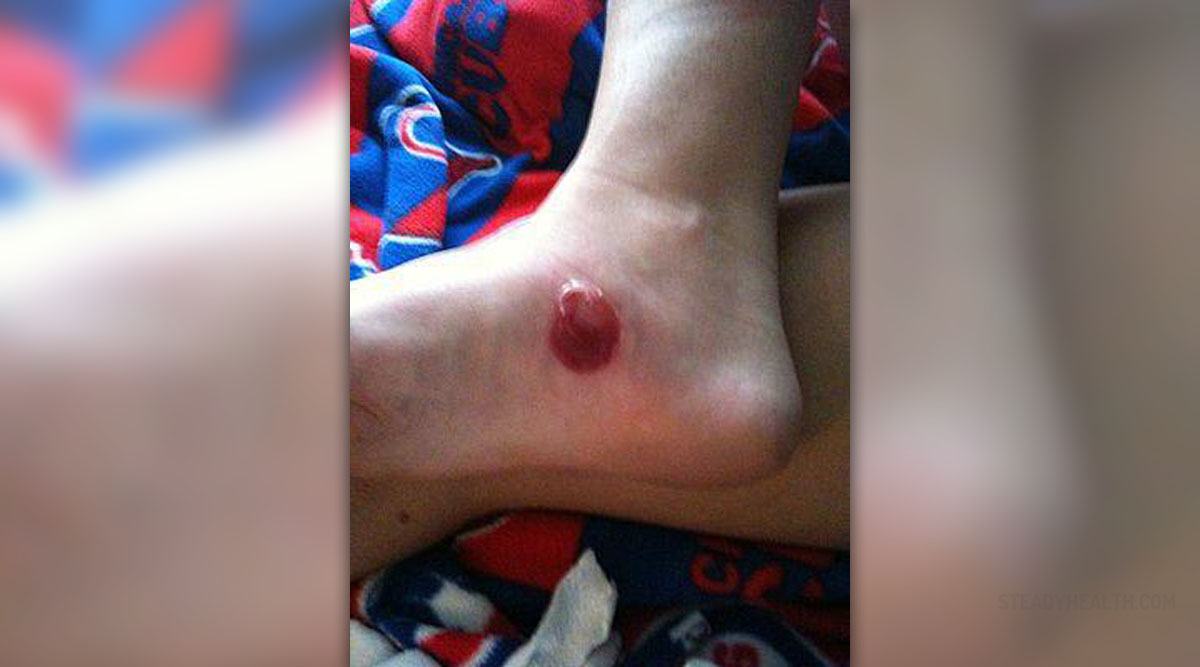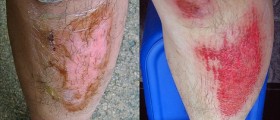
Hematoma represents extravasation (leakage) of blood from damaged blood vessels and its accumulation in the skin. Hematoma may form on any part of the skin, including the legs. This is, actually , a complication of any injury that leads to damage of superficial blood vessels of the skin and causes bleeding which does not leave the skin, but, instead, accumulates under its superficial layers. Hematomas in general develop due to blunt trauma and direct blow.
Clinical Characteristics of Hematoma in Leg
We can discuss symptoms and signs of the injury that has led to hematoma because the very accumulation of the blood only leads to specific skin discoloration. Since hematomas develop as a consequence of an injury, it is normal for patients to complain about pain of different intensity. If the injury is severe, the injured one may not even be able to walk. The affected area is tender and of specific color. Namely, initially, hematomas are dark purple due to accumulation of fresh blood. As time goes by the color of hematoma changes, it becomes greenish, yellow and finally, once all the blood and its components have been absorbed, the skin becomes of normal color again. Hematomas may significantly vary in size and this depends on the number of injured vessels and severity of bleeding.Treatment for Hematoma in Leg
Leg hematomas usually clear on their own. It is essential to rest the injured leg for certain period of time and, this way, accelerate healing and blood absorption. Pain due to an injury can be relieved with ice compresses which are supposed to be held for approximately 20 minutes. The process should repeat several times per day. Recovery can be boosted by improving the circulation in the injured portion of the leg. This can be achieved with a heat ointment, a heating pad and the same effect can be additionally obtained with heat lamps, compresses and whirlpools.
Pain caused by the injury is alleviated with painkillers (ibuprofen, acetaminophen etc.). Leg hematoma can be also treated with topical ointments and liniments. Large hematomas require several weeks or even months to completely resorb. In case a hematoma gradually expands, it is drained and only if it affects the portion of the leg right above the shin bone, it requires surgery.
Proper diet is recommended during the recovery. Patients should consume a lot of proteins, plenty of fruits and vegetables as well as dairy products. It is also recommended to take plenty of vitamin C either via food or vitamin supplements.
Hematomas in leg are generally not associated with severe complications. In rare cases patients may suffer from reduced blood circulation in the affected area due to large hematoma and if there is serious nerve or muscle damage, the injured person may end up with a weak foot.

















Your thoughts on this
Loading...